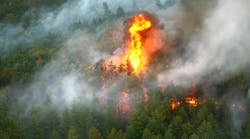Before the restoration following Hurricane Irene was complete, politicians were assuring the public that not only would the utilities’ emergency preparedness and response be assessed, but also that utilities should not charge the public for the restoration of service. Questions were raised about utility (tree trimming) vegetation management programs. The president and COO of Connecticut Light & Power publicly assured politicians that they would indeed look into tree trimming. As is typical whenever there is extensive storm damage to an overhead electrical system, the public and several politicians start clamouring for the undergrounding of the entire electrical system.
These sorts of accusatory comments may play well with customers who have been waiting for days to have their power restored. However, to industry observers outside the storm-affected area, such comments reek of crass political opportunism. In some cases the comments may be intended to reassure the public that the politician is on the job. Fair enough. When, however, statements are made that the utility(ies) should bear the storm restoration costs, then it’s time to put the politician’s feet to the fire. The lack of recognition or refusal to recognize the system and rate making mechanisms in place is simply unconscionable.
That the loss of electric service causes considerable hardships, as indicated by public outcry around every multi-day outage event, is indicative that electric service is a common good. It is clear in the aftermath of every major storm that the utilities are perceived as solely responsible and accountable for this public or common good.
It is incomprehensible to me why utilities allow such a preposterous lie to stand unchallenged.
Under our current rate making structure, utilities are free to implement only reliability improvements that will not increase capital or operating costs passed through to the ratepayer. Any cost increases must be approved by the regulator. It is my perception that utility requested rate increases are never approved in the amounts requested. (If you have data on this, I would love to know.) If the rate increase were not scaled back it would appear that the regulatory process is not functioning on behalf of the ratepayer. Yet, the utility alone is responsible for the performance of the electric system?
Whether it’s ice storms or wind storms, most of the damage to the electric system is due to tree failures. The only type of pruning that will avert these outages is the removal of overhangs. Tree-caused outages are correlated to the extent of electric system tree exposure (See 1, 2 & 3 (3 requires ISA membership)). Reducing tree exposure entails widening right of ways, increasing conductor height, drastically reducing tree height or undergrounding. We know what utilities need to do to decrease storm damage. However, utilities cannot implement the mitigation measures. The public wants undergrounding only if the utility bears the cost. The public wants no part of the other three means of decreasing tree exposure. Yet, the utility alone is responsible for the performance of the electric system?
It seems to me there is a gap in logic here big enough to drive a pole truck through. Utilities need to exploit this gap in logic. The regulators, by limiting funding, and the public by limiting effective tree-caused outage management have an enormous bearing on the extent of storm damage. They are impeding the delivery of the public good they claim to value. It’s time to prove the effect their decisions have on electric system performance and thereby expose the preposterous lie that the utilities are solely responsible the performance of the electric system.
Electric service needs to be deemed a common good. Such a declaration would facilitate regulatory support for actions that improve reliability and decrease electric system damages during storms, thereby, decreasing the restoration times and costs.

